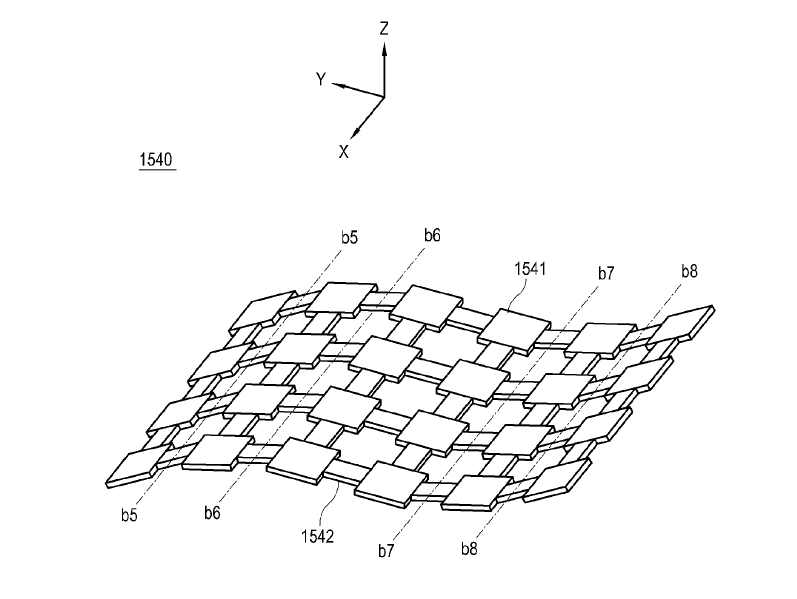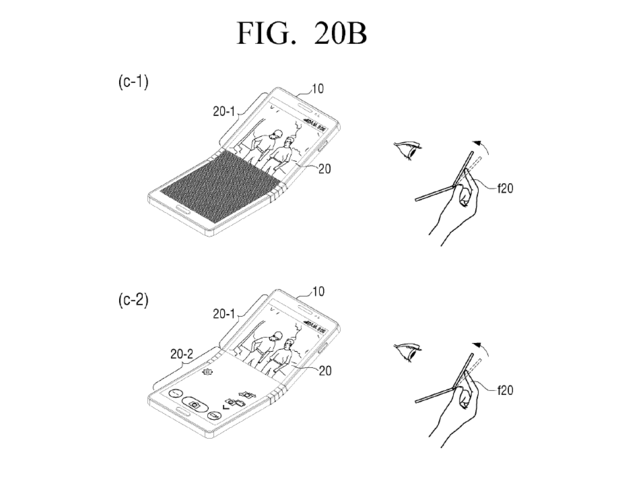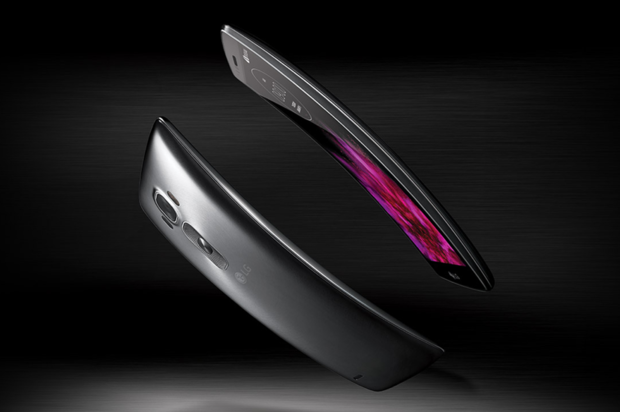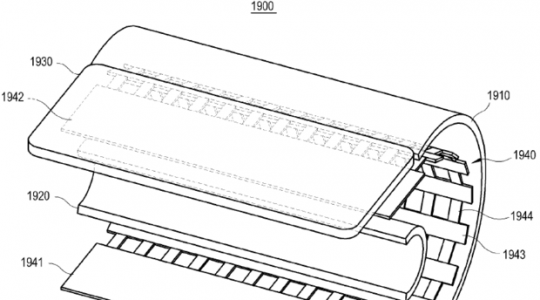Samsung has filed two U.S. patents for a smartphone that can bend using what it calls “artificial muscle,” which when voltage is applied through an internal controller can hold virtually any shape.
Originally noted by Korean IT News, the first patent (US20160195902) describes a flexible display panel; a flexible image processing board that controls the video signal to the panel; and “a support member provided between the display panel and the image processing board…and at least one artificial muscle connecting at least two plates and configured to be deformed to change a shape of the support member in accordance with a voltage applied thereto.”
Samsung flexible smartphone

Samsung/U.S. Patent and Trademark Office
Samsung described the “artificial muscle” as a matrix of tiny, connected plates that rely on voltage from a controller in the image processing board.
Samsung described the “artificial muscle” as a matrix of tiny, connected plates that — when bent by an external force — rely on voltage from a controller in the image processing board so “the artificial muscle can maintain the bending state in response to the sensor sensing that the artificial muscle is bent.”
Samsung flexible smartphone

Samsung/U.S. Patent and Trademark Office
Samsung’s second patent describes a smartphone with an upper and lower half; the upper half contains a display panel, the lower half, the control icons.
The second Samsung patent (US20160195938) describes a display panel separated into two regions, a top and bottom, that can be bent in half.
Samsung has been developing flexible smartphone technology for more than four years under the name “Project Valley.” In 2013, it revealed a concept smartphone that can fold out into an almost tablet-sized device and uses a new reflective display that changes color like a chameleon. That same year, it launched its first curved display smartphone, the Galaxy Round. It also demonstrated a flexible OLED display.
Last month, Samsung filed a U.S. patent describing “folding Smartphones into halves.” The company is expected by many industry pundits to release its first “foldable” device next year — possibly at the World Mobile Congress conference.
Samsung is not alone in its pursuit of smartphones that can be folded or rolled. Both LG and Apple have filed patents related to their own bendable smartphones. In 2013, LG launched the G Flex, a curved touchscreen. Last year, LG revealed the G Flex 2, a smartphone that offered some slight flexibility, but could not be rolled into a tight tube or folded.
LG flexible smartphone

LG
Last year, LG introduced the G Flex 2, a smartphone that offered some slight flexibility, but could not be rolled into a tube or folded.
Last year, Apple was awarded a U.S. patent for “a flexible electronic device, comprising: a flexible housing; a flexible display; a flexible battery; and a printed circuit having at least one flexible portion.”
Flexible glass is being developed by multiple companies, several universities and the Los Alamos National Laboratory.
Source: computerworld.com











